
Beth El Keser Israel | Arts & Culture | News From The Pews | Mending Minyan | COVID-19 | Temple Emanuel of Greater New Haven
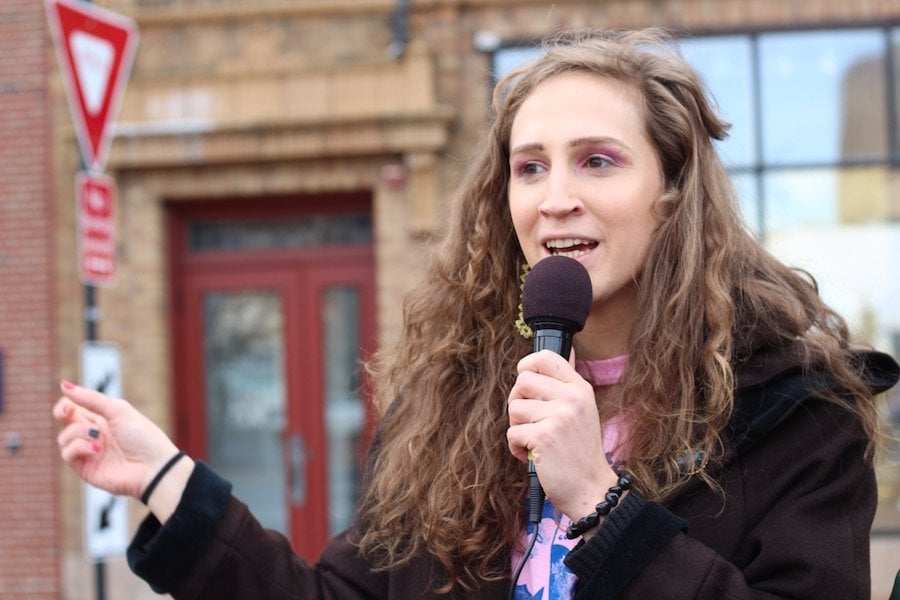
| Mikveh Warshaw in December 2018. Lucy Gellman File Photos. |
Mikveh Warshaw has a ritual for this time of year, when the leaves turn rust-colored at the edges and apples start to hang heavy from the trees. She gets in her car and drives to Sperry Falls, where a hidden cove doubles as a mikvah, or ritual cleansing bath. When she has finished, she’s ready to welcome in Rosh Hashanah, the Jewish New Year.
Warshaw is one of the leaders of Mending Minyan, a New Haven havurah designed for Jews at the margins, those who haven’t found a spiritual home elsewhere in the city, and those who want a practice that isn’t synonymous with Zionism. This fall, she is one of thousands of Jews across New Haven entering the High Holy Days during COVID-19.
Each fall, the High Holy Days mark the beginning of the Jewish New Year, dictated by the lunisolar calendar. Amidst its blessings for a sweet new year, Rosh Hashanah is meant to usher in 10 days of intense contemplation and repentance, at the end of which comes Yom Kippur, or the Day of Atonement. It is theoretically the final chance to repent, as God closes the book of life and seals one's fate.
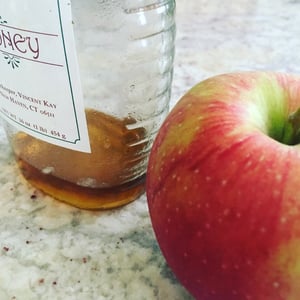
But this year—5781, heavily informed by 2020—feels tonally different. Unlike a pandemic-era Passover in April—celebrated with at-home Zoom seders, streamed retellings of the Exodus story, and new forays into homemade matzoh—Rosh Hashanah comes in the midst of a first wave of COVID-19 that is still raging.
Zoom fatigue, like pandemic-era insomnia, has become a widely documented phenomenon. There are whole conversations around the safety of blowing the shofar, a ram’s horn that gives a deep woodwind-esque bellow when blown to usher in the new year. The communal gathering so integral to the holiday feels hard to pin down. Less than two hours into Rosh Hashanah celebrations Friday, it was announced that U.S. Supreme Court Justice Ruth Bader Ginsburg had passed away.
In greater New Haven, spiritual leaders are trying to figure out how to keep the rituals alive. The Arts Paper spoke to three of them: Warshaw at Mending Minyan, Rabbi Jon-Jay Tilsen at Congregation Beth El–Keser Israel (BEKI), and Rabbi Michael Farbman of Temple Emanuel of Greater New Haven in Orange. In the interest of full disclosure, this reporter is a member of Mending Minyan.
All of them lead congregations with different expectations around the High Holy Days, and around Judaism itself. But all of them have also found themselves navigating the same thick, often confounding sense of loss, leaning on the weight of history, and trying to pull new lessons from a year upended.
A Hybrid Approach
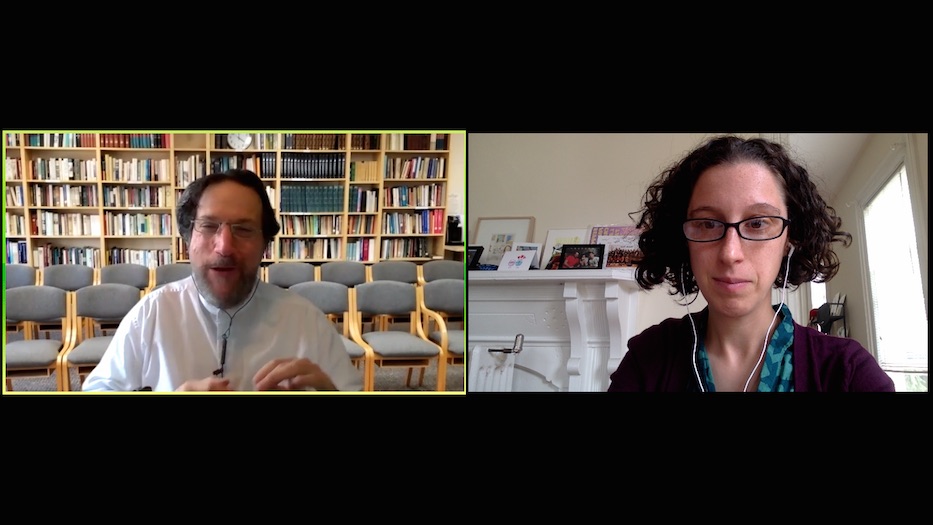
| Tilsen (left): "One thing that I’ve tried to do is invoke our history." |
At the beginning of this year, Rabbi Jon-Jay Tilsen expected the biggest challenge to High Holy Days services to be a changing of the guard on the planning committee. Then COVID-19 hit.
Tilsen is the rabbi at BEKI, a large brick building that sits just off Whalley Avenue in New Haven’s Westville neighborhood. The synagogue, which is Conservative, egalitarian, and largely member-led, takes a halachic approach—it follows traditional Jewish law. For Tilsen, that means offering newly abridged, in-person services with online options to the nearly 300 families that BEKI serves.
He said the services are informed by both best practices in public health—he has spoken with medical professionals about stemming the risk of COVID-19—and a deep belief that it is his duty to open the physical space to those who need it.
“It’s trying to facilitate the performance of mitzvot,” he said. “For some people, the services enhance a sense of spiritual sensitivity that impel us to teshuvah (repentance).”
It won’t feel the same, he said. Services are short, and masks are required for anyone who participates in person. Group singing isn't advisable. In his planning, he has had to cut Yom Kippur down to a brief service, leaving congregants who are fasting with hours of unstructured time. That means “less musical elaboration, less poetry” on a day that usually has services that last from morning to evening.
No one has been entirely happy with the plan, he said. Some congregants have complained that they can’t be in sanctuary for health reasons, but “don’t want the high holidays to be something they watch on T.V.” Some can’t bring themselves to watch online, because they feel that it defies Jewish law. Others are frustrated with the brevity, after years spent worshipping in the same space for hours.
But Tilsen has worked to save the ritual practices that he can control. While group singing is out, the synagogue will have recordings “of voices that are familiar,” in which he hopes congregants can take comfort. The shofar, which is normally blown inside the sanctuary, will be sounded from its loading dock instead. Outdoors, BEKI plans to hold three tashlich services Sunday, during which congregants cast off their sins into a local body of water.
Even as the formula shifts, he said, he is urging congregants to let the High Holy Days be a chance to turn inward just as they would in a different year, when gathering did not seem so dangerous and far-flung. He likened Rosh Hashanah to a trial date and Yom Kippur to a final sentencing, noting that most people at BEKI begin their process of reflection earlier in Elul, the final month of the Jewish year.
“You could say that about teshuva,” he said. “One is supposed to be doing that every day. We’re just so busy every day, making it through the day. It’s so hard to do that. We’re trying to get ready before. And that means disrupting complacency.“
It comes six months into a time that has also been trying for him, after decades as both a faith leader and fierce advocate for Black, immigrant and Indigenous rights in the U.S. In the midst of COVID-19, he has listened to congregants express “a profound sense of loss associated with the pandemic,” from unemployment to social and physical isolation.
The hours, he said, turn out to be much longer when they include phone check-ins and public health minutiae. Older congregants are distraught that they can’t see or touch their grandchildren. Younger ones have had to stop dating. There is loss everywhere they turn. He doesn’t always know whether to lead with humor, or strike a more serious tone.
“That’s always a tough thing for rabbis, because there are always people who want to be entertained, and there are people who have suffered a terrible loss, and they want the world to be as sad as they are,” he said. “In speaking and in writing, I’ve tried to address coping and resilience. The 1918 flu pandemic. Or people dealing with war. To help people find and activate the coping skills that they already have.”
He has also been thinking about the role that history can play in interpreting the moment. He thinks of his dad, who continued practicing through World War II with whatever he had at his disposal. Jews have weathered other storms, not all of them with WiFi connections.
“It’s a new constraint,” he said. “It’s a huge constraint. One thing that I’ve tried to do is invoke our history. We have a continuous literary history going back 3,000 years. We can read about the Maccabees. We can read about the destruction of the First Temple. It can inform us. It can help us feel like we’re part of history.”
Together, Online
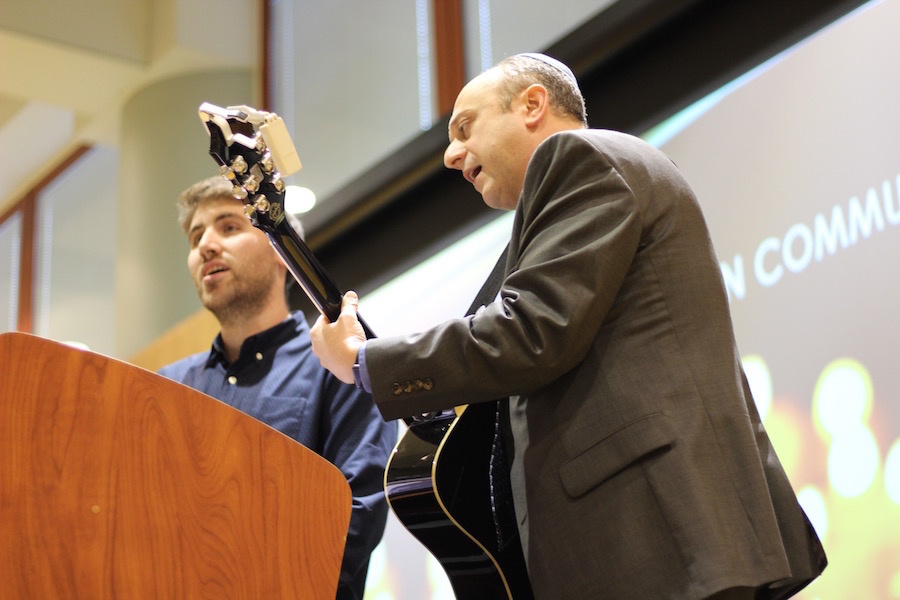
| Farbman (at right) at a 2018 memorial to the victims of theTree of Life Sanctuary in Pittsburgh. Lucy Gellman File Photo. |
In Orange, Farbman spent the week putting the final touches on Zoom-only High Holy Day services, which start Sept. 18 and go through the 28th. Since March 13, the temple has been entirely online, save a few recent outdoor, socially distanced Shabbat services. While this will be his 12th Rosh Hashanah and Yom Kippur with the congregation, he said he is not sure what to expect.
“How is it changing the nature of the High Holy Days?” he said in a recent interview on Google Meet. “After these two weeks are over, we will hopefully begin to process and to understand and to notice. I think that in this moment of awareness, an incredible creativity has been unleashed.”
He wasn’t always sure that the sanctuary would be entirely online for services. Zoom is not his gospel; he mentioned several times that “I really don’t want to be an online rabbi” in the course of a 30-minute interview. When Connecticut began reopening its economy in late May, he spoke with other members of the congregation, to figure out what opening the sanctuary might look like.
When he decided on Zoom—that “the primary goal is to keep people healthy and safe,” and the internet was the way to do it—some congregants were less excited about the plan than others.
He adapted the best he could, he said. When he realized that the existing liturgy would translate to a three-hour online service, he began cutting. He returned to the text, and cut a little more. For a while, it felt necessary. He paced himself.
“And then I began cutting stuff that really hurts,” he recalled. That included parts of the Amidah. “And that is where I felt the real angst. The liturgist in me is crying.”
“What are people going to experience?” he later asked aloud. “Will they hear the haunting melodies they need to hear? Will we have the skeleton, the basic part, of the service that they need?”
In that calculus—of what to keep and what to eliminate—he said he is trying to let the needs of the congregation lead him. After weeks of Zoom shabbat, torah study and new anti-racism courses with full attendance, he realized that what people wanted wasn’t just the ritual—it was also each other. Like Tilsen, he has also struggled with pastoral duties in the past months; he has listened to many of the same anxieties around pandemic-enforced separation, isolation, and loss.
Before COVID-19, Farbman could walk into a hospital room to provide support to sick, dying, or recovering patients. He loved doing home visits to congregants recovering from surgery or getting over an illness. He recalled how, in the wake of Hurricane Irene in 2011 and Hurricane Sandy in 2012, congregants with power and hot water opened their homes to those who had lost it. This year, there’s no such equivalent in an emergency (although Emanuel’s outreach has not stopped; it’s running a High Holy Day food drive). The closest they’ve gotten to touch is a socially distanced service.
To create a sense of community from the outset, he planned to welcome Rosh Hashanah in front of both a screen and his own table, complete with apples and honey. He called the temple's pandemic-style Rosh Hashanah seder—a Sephardic tradition—open to anyone who wanted to join and eat across the distance.
“Those who really want the companionship and the community, that is more important than the liturgy,” he said. “This year’s challenge is: how do we keep our tradition relevant, accessible, meaningful, how do we retain the core of what it does for us, and what it has done for us for years?”
He added that he also sees this time of the year as a powerful chance to turn inward, reflect, and atone amidst the parallel pandemics of both COVID-19 and racism. For the past several months, Emanuel has been doing new anti-racism teaching and discussion, led by a small group of congregants.
Rather than Tikkun Olam—the notion of repairing the world—Farbman said he thinks about the Days Of Awe as a chance for Tikkun Atzmi—the notion of repairing the self.
“You can’t fix the world unless you start with yourself,” he said. “I think that the High Holy Days are part of this conversation.”
Deeply Grieving, Deeply Grateful
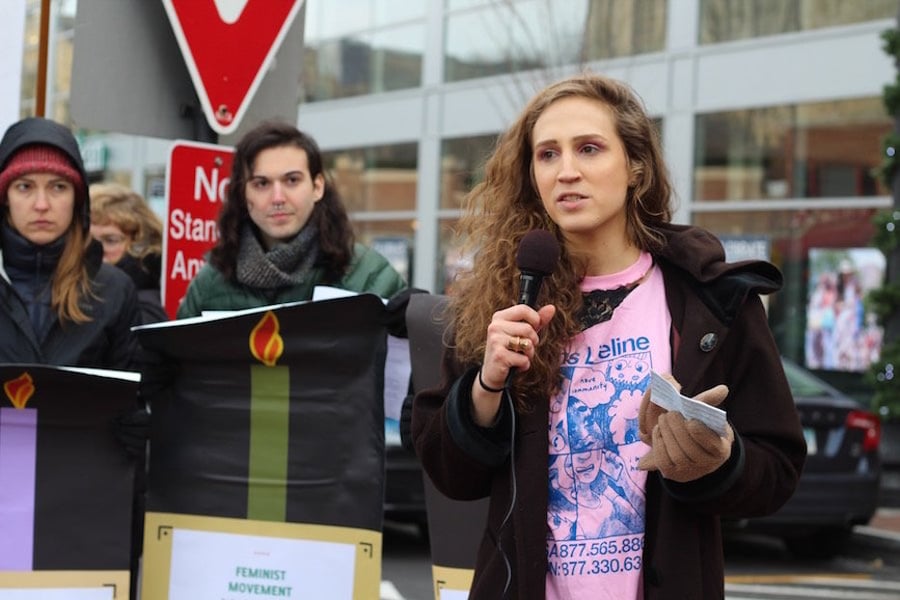
For Warshaw, both her personal practice and her role in Mending Minyan have opened the High Holy Days to possibility this year. In the mist of COVID-19—and the parallel pandemic of racism—she too is taking the 10-day stretch as a chance to turn inward and reflect.
Mending Minyan has an intersectional approach to Judaism: prayers are presented in the context of Black, immigrant, worker, and Palestenian liberation. In the loss that 2020 has brought with it, she is holding onto the ritual that COVID-19 has not put a complete stop to.
She’s made time for the mikvah. Friday night, she led Mending Minyan in its Erev Rosh Hashanah service, which also fell on shabbat. During the Mourner’s Kaddish, she listened as members made room for Ginsburg, their grief fresh. She rolled into the new year with a round challah, symbolic of a sweet 5781.
Zoom wouldn’t have been her first choice—the group has been virtual since early March—but it is getting the job done.
On Sunday, members of the group are holding a tashlich service beside the West River. For her, it feels like coming full circle: the group began with a Rosh Hashanah service at the Palestine Museum in Woodbridge three years ago. As they gather outdoors, members will still get to hear the shofar, even if it is at a distance.
“In some ways I’m deeply grieving,” she said. “To not be able to come together and sing songs together. There’s so much hurt right now. But I’m also deeply grateful. I can do tashlich and still hear a shofar, so I still get to have the embodied elements to a lot of the rituals. It feels really apparent in my body and in my sensations.”
She added that the Days of Awe, which happen whether there is a pandemic or not, have stopped her as if by force, inserting themselves into the inertia of 2020. She’s hoping that members of Mending Minyan are able to take the time to do the same.
“For my community, I’m hoping people are able to connect to a divine spark within themselves and around them, to give them fuel,” she said. “And for myself I’m hoping that I am able to grow and learn, and listen deeply to what is needed in this moment. I hope the High Holy Days are a time that people renew themselves. It happens at the same time of year as flu vaccines, and it’s like the booster shot for your spirit.”
“I dream of a time when us Jews can celebrate and gather together again,” she said. “How different and beautiful it might feel. Inshallah. Baruch hashem.”

